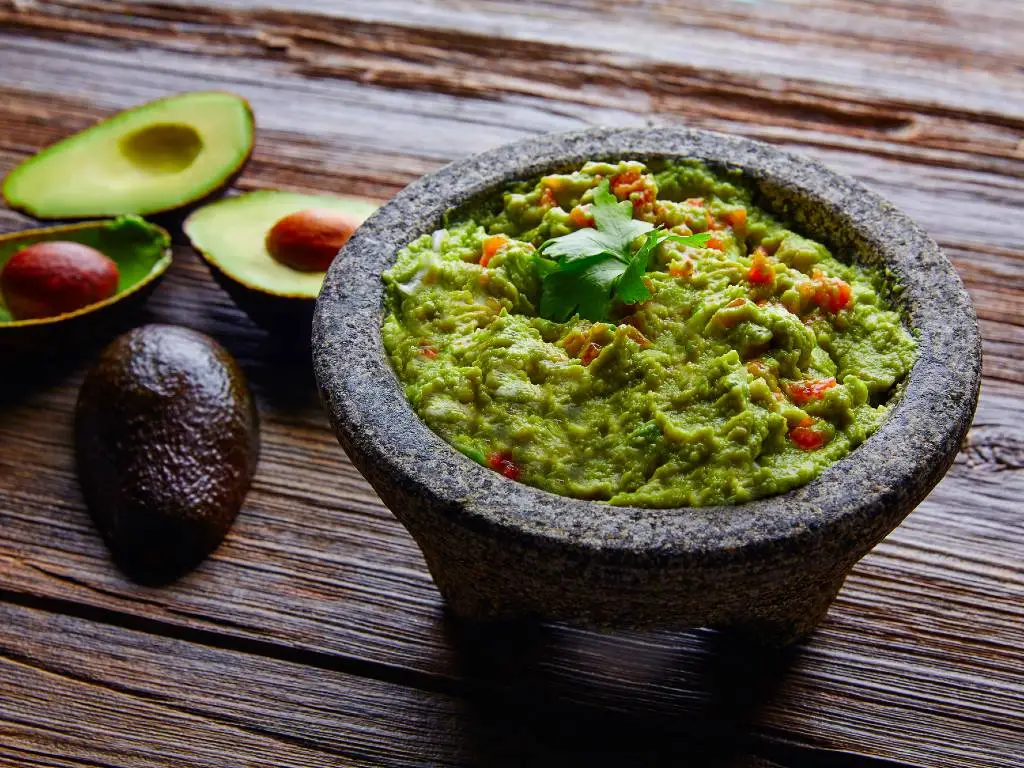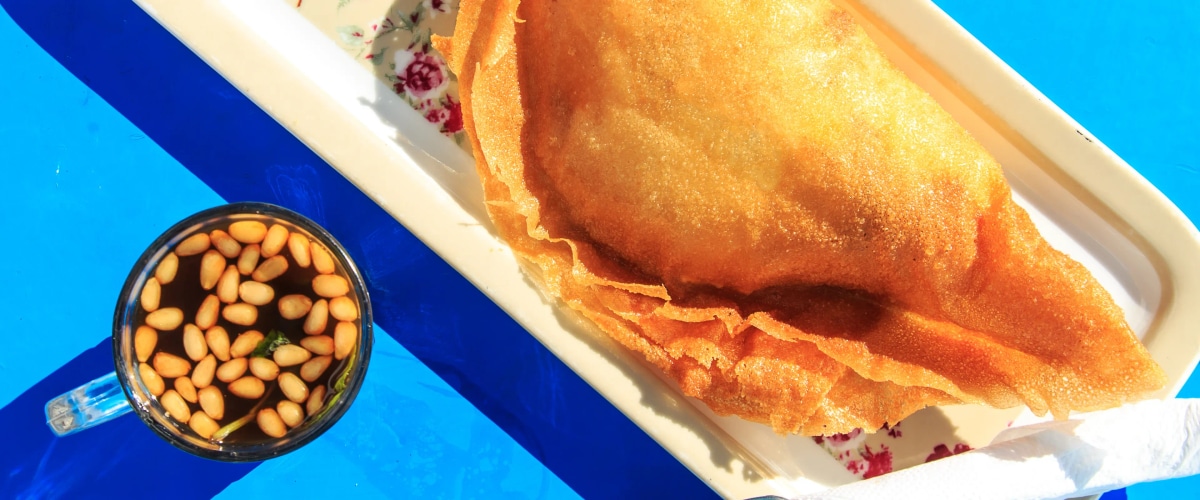
Marmitako: The Fish Stew That’s a Summertime Symbol of Basque Country
Humble potatoes in a red-tinted broth. Beautiful pieces of fresh tuna. Steaming with the scent of choricero pepper, stewed tomatoes, and onions, marmitako is pure comfort food. A dish that was born of necessity on the deck of a boat at sea slowly grew its land legs and is now one of the dishes par excellence of Basque cuisine.
Warm soups are usually a wintry affair, but this potato and tuna stew could possibly be one of the only steaming soups whose season is summertime. During the Basque fishing season—around July to September—the fleet typically catches over 3,000 tons of tuna a month, according to previous reporting, which translates to more than 50% of the Spanish tuna quota, a hard limit set by the European Union. While much of this tuna gets canned, some of it ends up in the “marmita”—or pot, in the Basque language—to make this famed soup.

A creation of the open sea
The exact provenance of this soup is somewhat a mystery, but the approximation is widely accepted by Basques and chefs alike. For their many-millennia-long history, the Basques—who live in a region west of the Pyrenees Mountains straddling Spain and France—have been a seafaring people, among the first to reach Greenland and the Americas. Months spent at sea, however, proved to be culinarily challenging. Meals had to be simple to prepare and based around ingredient staples and, of course, the catch of the day.
“Marmitako is one of the great stews of traditional Basque cuisine,” says Pablo Loureiro Rodil, chef-owner of award-winning Casa Urola and perennial judge of the annual marmitako cooking competition in San Sebastián. “It’s clearly documented that it was born out of necessity in the Basque fishing boats, whose sailors had little to eat out at sea. With a few potatoes, fish, and not much else, this dish was born.”
The Spanish were some of the first to plant the New World tuber in Europe, as early explorers brought potatoes from South America to the Iberian Peninsula. By the end of the 1500s, before much of the rest of Europe knew potatoes existed, Basques were planting them in their gardens along the coast of the Bay of Biscay.
The nourishing, hardy vegetable quickly became a mainstay on ships and in the marmita. In the summer months—tuna season—the combination of tuna and potatoes was born and christened marmitako, literally “from the pot.”
As tomatoes and peppers from the New World eventually grew in culinary popularity, they also became mainstays of Basque cooking, finding their way into the marmitako, elevating its flavors, and transforming the soup into something that everyone (not just the seafarers) wanted to enjoy.
“What was really a humble stew kept getting better and better,” says Loureiro. “The addition of green pepper, choricero pepper, and tomato made it the popular dish it is today.”
And that’s how the need for something filling, warming, and easy to prepare out at sea got even landlubber Basques eating a hot fish stew in the middle of August.

Hegaluze, the choice tuna of the Basque
Tuna is one of Basque cuisine’s most prized ingredients. Not just any tuna, though—Basques eschew the gorgeous ruby red tuna revered by global culinary culture in favor of the albacore white tuna, which they call hegaluze.
Hegaluze is known across Spain as “bonito del norte”, translating to “beauty of the north” and signaling its deep roots in Basque Country. The albacore has dark blue, almost black, skin, which fades to white along its underside. Its meat is juicy and flavorful and gathers quite a bit of fat, especially along the belly. This tuna rarely comes in at more than 100 pounds, while larger bluefin can reach over 1,000 pounds.
The fishing season begins in July, when tuna swims into the ports along the Basque coast. Fishing them is a demanding endeavor, one in which large boats head out to sea for weeks at a time and catch the tuna one by one on the line. They are then packed with ice and distributed from the low-lying fishing warehouses up and down the coast, where they are sorted depending on freshness, which is determined by the color of the fish’s gills.

Making marmitako
Marmitako is both simple and exquisite. To make it, onions, green peppers, and a bit of garlic are sautéed until golden. Bits of potato are added; many use the traditional method of cutting off chunks with a knife while holding the potato in the other hand. This method is a nod to the lack of cutting surfaces aboard the ships, but Basques swear it results in a thicker soup.
Then, choricero pepper puree and tomato are added, allowed to cook a bit, topped with water or broth, and brought to a simmer until the potatoes are tender and smaller pieces begin to fall apart.
At this moment, chunks of raw tuna are added as the stew is removed from heat, cooking in the residual warmth to the perfect doneness. This last touch is new—hungry seafarers would have added everything at once and allowed it to simmer, creating an overcooked tuna.
“Today, the cooking of the tuna is something we give a lot of importance to,” says Loureiro. “Adding it at the end ensures that it stays juicy, whereas it used to end up quite dry. In the end, traditional cuisine always evolves.”
The result is a fragrant broth, light with a bit of body from the starch of the potatoes. The taste is beautifully rich from the caramelized vegetables, yet balanced thanks to the acidic touch from the tomatoes. Chunks of juicy tuna and tender potatoes, flavorful from cooking in the broth, provide the wow factor on the plate.
A marmitako resurgence
Marmitako is the perfect example of necessity cooking turned tradition. When Spain opened its borders after dictator Francisco Franco’s death in 1975, demand for novelty and luxury was high. For years, marmitako was relegated to home kitchens, a comfort food deemed unfit for the fashionable white tablecloths that were rapidly multiplying as part of the Nueva Cocina Vasca culinary movement.
Now, tradition has come back in a big way across Spain, and the humble marmitako is being celebrated not just at home, but in the best restaurants of Basque Country as an example of local, seasonal cuisine.
This hyper-local recipe is found mostly on the Spanish Basque coastline of the Bizkaia and Gipuzkoa provinces. Just a few miles inland, in the province of Araba, it becomes nearly impossible to find a bowl.
Meanwhile, step across the border into French Basque Country and marmitako is edged out by ttoro, a more complex fish soup with more vegetables, more herbs, and more seafood—sometimes including monkfish, conger eel, mussels, and scallops.
Marmitako cooking contests are a staple during local festivities, including San Sebastián’s Aste Nagusia (Big Week) held every August.
“The current culinary obsession with local, seasonal, and sustainable suits the marmitako,” says Loureiro. “Now you see it on both traditional Basque restaurant menus and as part of a creative cuisine. When the first boats arrive at the beginning of summer, marmitako abounds in both its traditional and current versions.”

Where to eat marmitako around Basque Country
La Hermandad de Pescadores, Hondarribia
This “Fraternity of Fishermen,” situated between the fishing neighborhood and the water, is known far and wide for its quality seafood. Go here for traditional marmitako in a traditional setting. Also, order their Gipuzkoa-style fish soup, a brown soup rich with a variety of seafood, from clams to hake.
Artza, Bermeo
A local favorite in the traditional fishing town Bermeo, Artza is known for its home cooking. And in a town that sees an influx of tuna-fishing boats in summer, marmitako reigns king. Artza has generous serving sizes and a traditional marmitako.
Restaurante Igeldo, San Sebastián
Located on the picturesque port of San Sebastián, Restaurante Igeldo is one of the only restaurants to regularly serve a traditional marmitako in the old part of the city. Not only are the views spectacular, but it’s also centrally located. This is your best bet if you’re staying within city limits.
Zazpi, San Sebastián
For a modern take on the marmitako, visit Zazpi in the San Telmo Museum. Chef-owner Paul Arrillaga regularly wins local awards for his creative cuisine, and in season, he serves a fine-dining version of the dish of potatoes and choricero pepper in an elegant fish broth, which he often finishes with other seasonal fish, such as mullet and monkfish.
Join Going and get cheap flights and travel tips delivered right to your inbox.
Read more about delicious dishes around the world:
Last updated May 12, 2025









